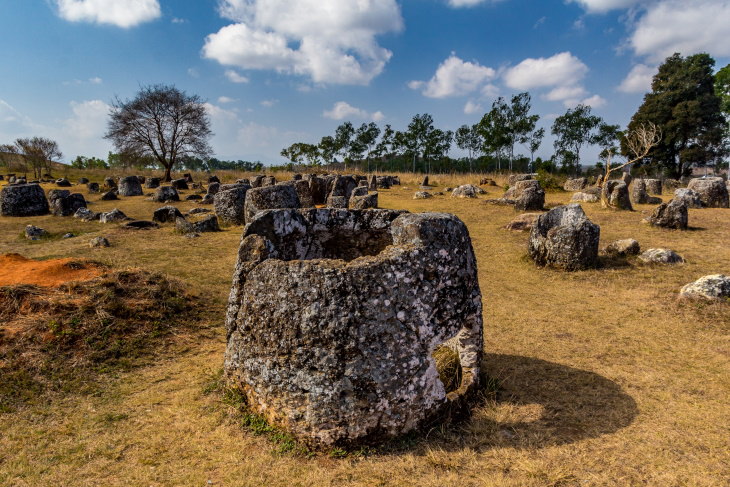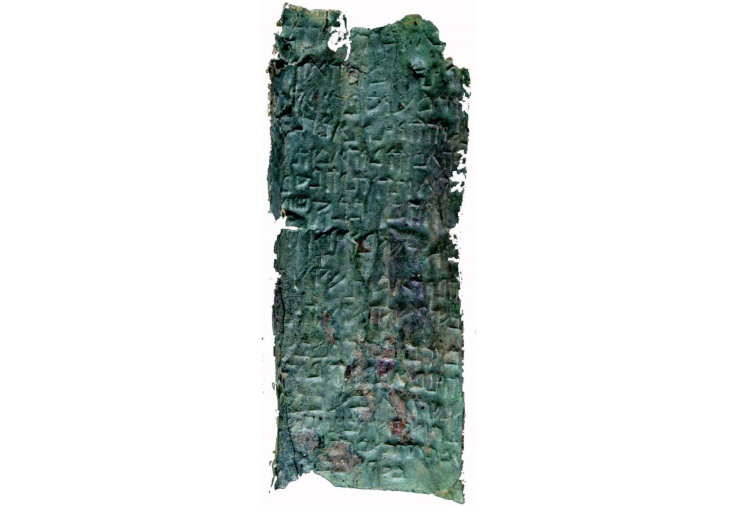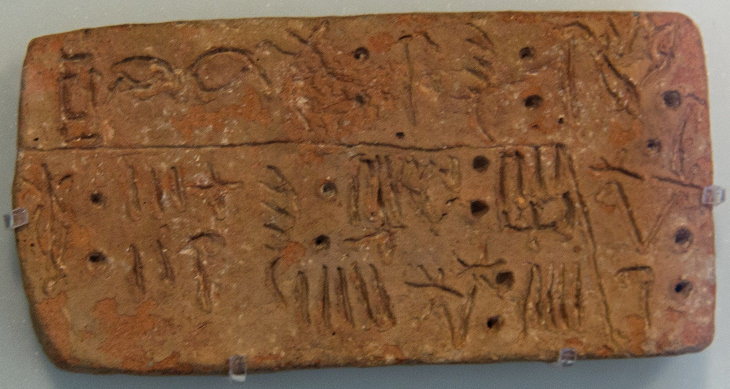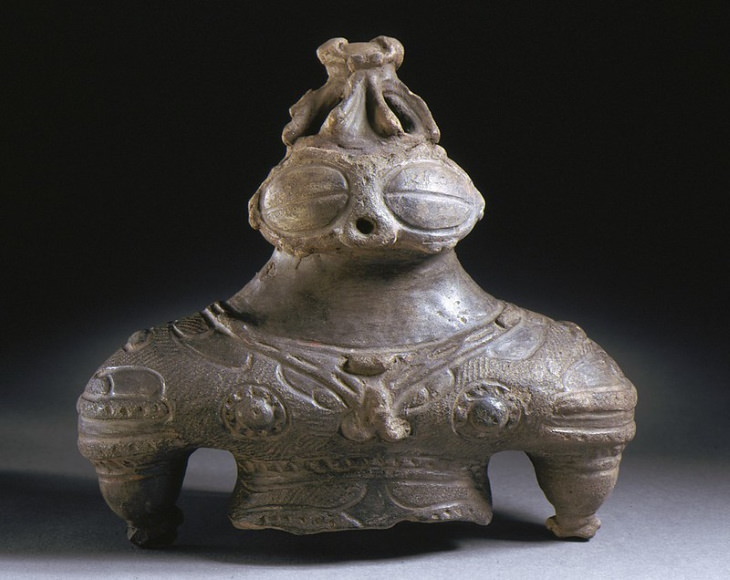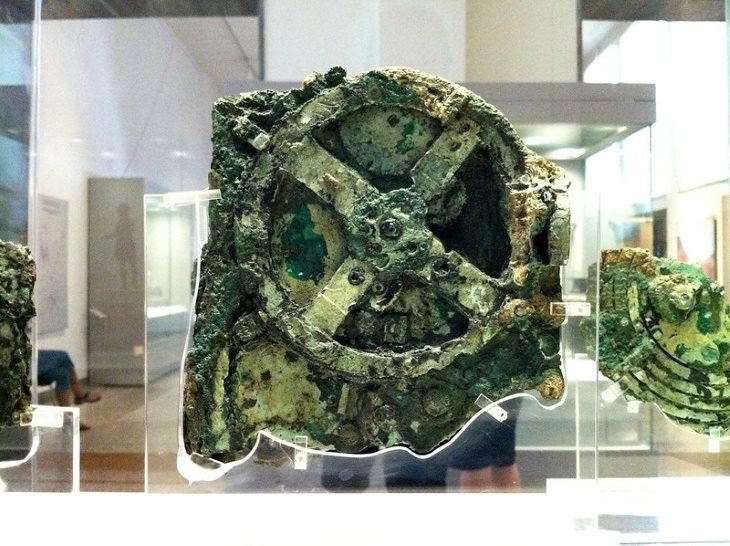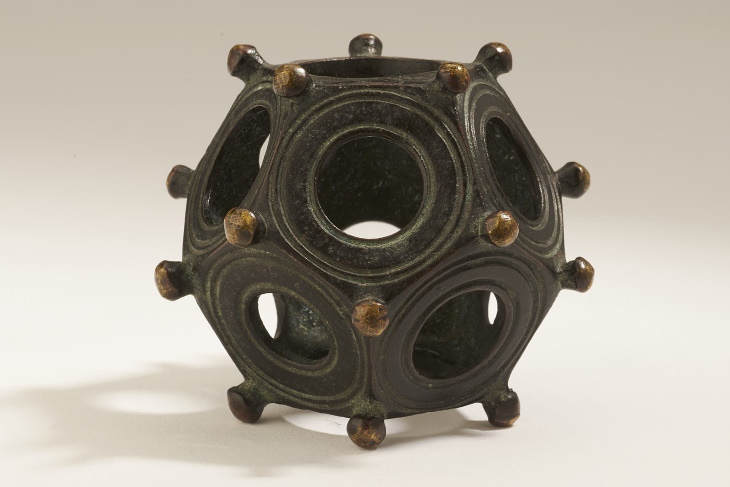1. Plain of Jars
Scattered across the Xiangkhoang Plateau in the North of Laos are 60 megalithic archaeological sites consisting of mysterious clusters of large stone jars, some as tall as 2 meters (6.5 ft). Thousands of these stone jars can be found in the valleys and forests here. A local legend has it that the area was once inhabited by mythical giants who used the massive jars to brew alcohol and celebrate their victory over an enemy.
Archeological excavations have been conducted here since the 1930s and have established that some of the megaliths are 2,500 years old! Excavations continue to this day, and some of the nearby jar burials and human remains suggest that the jars might have been part of some ancient burial ritual. Unfortunately, researching the area is extremely dangerous and difficult, since there are many remaining undetonated US bombs from the Vietnam War. For this reason, only seven of the 60 Plain of Jars archeological sites can be accessed by the public, and we may never learn of the real purpose of these mysterious jars.
2. Copper Scroll
The second ancient mystery on our list is a treasure tale found on the northwestern shore of the Dead Sea. Discovered together with the famous Dead Sea Scrolls (the oldest Biblical manuscripts ever found) on-site in Qumran, the so-called Copper Scroll differed a lot from the remaining scrolls found on site.
The 1,900-year-old scroll is 240 cm (8 ft) in length, and it tells the story of a buried gold and silver treasure scattered in 64 places. At the time of its creation, the Qumran area was governed by the Roman Empire, and the treasure could have been hidden to prevent its confiscation by the Romans. However, the treasure described in the scroll is so massive that it led some researchers to think that it’s probably a hoax, but we will probably never know if this treasure is real.
Related Article: History's Most Astonishing Unsolved Mysteries
3. Linear A
Would you believe us if we told you that the language of the first advanced civilization in Europe remains a mystery to science? Linear A is an ancient writing system used by the Minoans between 1800-1450 BC to record their language. The Minoans were the inhabitants of the island of Crete and the other Aegean Islands, and they are widely believed to be the first advanced urban civilization in Europe that left behind massive buildings and fine art.
Linear A was eventually replaced by Linear B, an early form of the Greek language known as Mycenaean Greek that was deciphered in the 1950s. Linear A and Linear B share many common symbols, and they are believed to denote syllables rather than sounds. Still, this knowledge didn’t get language historians any closer to deciphering or understanding any words in Linear A.
4. Dogū
In prehistoric times, between 14,000 and 300 BC, the territory of Japan was home to a diverse population known as the Jōmon culture. Apart from the beautiful pottery left behind by these Neolithic peoples, archeologists have unearthed as many as 18,000 clay figures that depict human and animal-like creatures.
Known as dogū, these figures are between 2,300 and 10,000 years old, and the Jōmon people were the only culture that made them. The subsequent Yayoi people didn’t produce dogū, and the purpose of these figures remains unknown. One theory is that the dogū were used in magical rituals as vessels onto which practitioners would transfer the illnesses and misfortunes of people.
5. Cleopatra’s Tomb
Cleopatra (1888) by John William Waterhouse
In 30 BC, the famous Cleopatra VII and her lover, the Roman general Mark Antony, both died after an unsuccessful military campaign against Octavian, better known as the Roman Emperor Augustus I. The Ancient Egyptian queen was 39 when she committed suicide using a poisonous snake called the asp, a symbol of divine royalty.
According to the Greek philosopher and historian Plutarch, the couple was buried together near a temple of Isis, the Egyptian mother goddess, in a massive mausoleum filled to the brim with unseen treasures. However, the exact location of the said tomb remains a mystery to this day. Several excavations were made near Alexandria to locate the last Egyptian queen’s burial but to no avail. Experts have noted that Cleopatra’s tomb could be so heavily looted that it’s unidentifiable, and they may never be able to find it.
6. Antikythera Mechanism
From plumbing to concrete, we can credit the Ancient Greeks and Romans for inventing many things. But should the computer be on that list of inventions that date back to over 2,000 years? This question has been open for over a century. In 1900, an underwater shipwreck excavation unearthed an Ancient Greek mechanism the likes of which the world had never seen before - the Antikythera mechanism.
Dubbed the “world’s first computer,” the wind-up dial system was created to study the celestial movements of the Sun, the Moon, and 5 planets. The mechanism had a calendar and it could likely predict eclipses. Long story short, this mechanism was more complex than anything else created by humans in the following 1,000 years. Exactly how Ancient Greeks had managed to build such a fascinating contraption remains an enigma. Learn more about this arcane mechanism here - A Guide to the Mysterious Antikythera Mechanism.
7. Roman Dodecahedrons
Bronze Dodecahedron (1st-4th century AD)
The Ancient Romans left us mysterious objects of their own too! Roman dodecahedrons are small (4-11 cm or 1.6-4.3 inch big) 12-sided bronze or stone objects with holes and a hollow center. The first dodecahedrons were unearthed in the 18th century, and since then, at least 116 new ones have been found all across Europe. Dodecahedrons were produced between 100-300 AD and evidence suggests that these were valuable objects because many were found in coin hoards, but there’s no written record of their use.
Both historians and ordinary people have been straining their brains to determine the real purpose of these objects. Theories range from religious objects to knitting devices and candlestick holders, but there’s no consensus confirming any of these often far-fetched suggestions.
8. Thonis-Heracleion
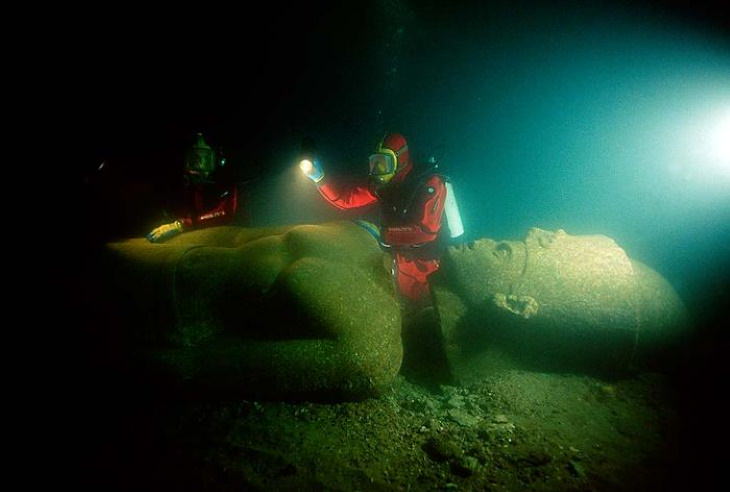
Historical records tell the story of the Egyptian port city of Thonis-Heracleion that served as a passage to the Mediterranean. The city flourished over 2,700 years ago. And for centuries, it was believed to be a mythical location akin to the underwater city of Atlantis. After all, how could a large city like this completely vanish off the face of the Earth? It turns out that it didn’t.
All these years, Thonis-Heracleion was hiding in plain sight below sea level. Only in the early 2000s, divers found some ancient Egyptian artifacts off the coast of Egypt. When they dug deeper, an entire city hidden underwater - bridges, columns, 16-foot sculptures, sarcophagi - had appeared before their eyes.
Some of the findings were excavated and studied since, but archaeologists still don’t how the whole city was engulfed by the sea. Some scientists suggest that a combination of natural cataclysms like a tsunami or an earthquake could play a role, but we will probably never know what exactly had happened.
Share this fascinating information with those who love history!
H/T: Reader's Digest, Live Science

